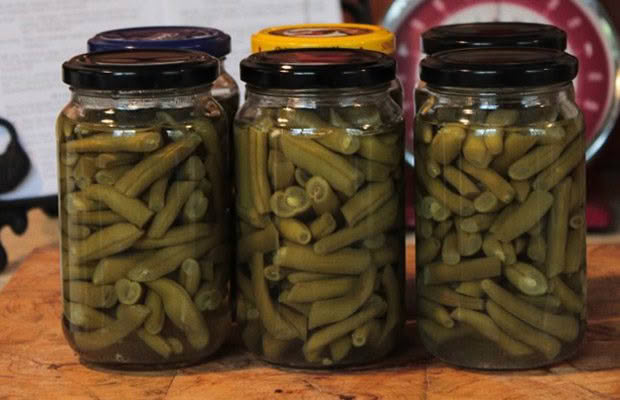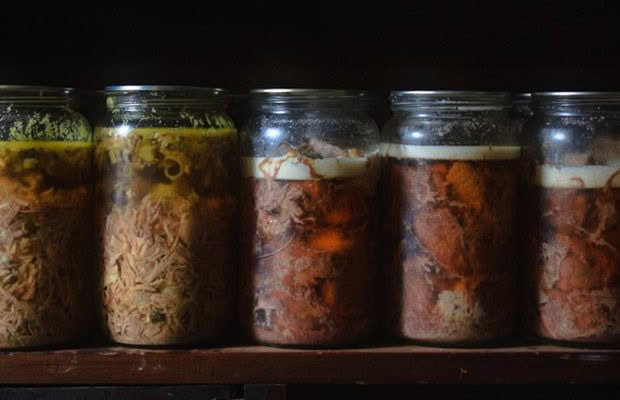Rebecca Stewart: The rise of the pressure canner

This modern tool adds a new string to the self-sufficient homesteader’s bow.
Words: Rebecca Stewart Images: Summer Stewart
Over the past few years, I have watched the rise of the pressure canner in New Zealand.
Our nation’s preserving history was built on the sweat of our parents and grandparents slaving over their bottling and preserving. But now the American term ‘canning’ is growing here by leaps and bounds. The phrase typically incorporates two methods: pressure canning for low-acid foods and water bathing for high-acid foods.
This is partly because so much information flooding the social media networks is by American homesteaders and unless you’re a ‘rebel canner,’ everything even remotely low acid (meat and most veggies) is pressure canned. Some ‘rebels’ however still practice the traditional water bathing methods for low-acid foods. Other rebels will pressure-can, but use methods like dry-packed veggies (no liquid added), or can-dense foods like meatloaf. These methods are frowned upon by the safety advisers – but then so is our traditional overflow method. Every canning season we see the ‘by the book’ (USDA’s Complete Guide to Home Canning) crowd versus the ‘how my grandma did it’ crowd. Apparently, in the States this can get quite hostile… but then botulism, or food poisoning for that matter, is not to be sneezed at, I guess. If we’re going to do preserving in any method, it’s a good idea to learn the best practice to keep our food safe. Or at least understand what could make it unsafe.

We take the best from both worlds, using modern methods where we feel they are needed and embracing traditional methods where we can. But we’re low-carb so sugary preserves and fruits bottled in syrups are a no-go, apart from the occasional batch of jam – which usually gets mostly given away. Fortunately, I managed to acquire a pressure canner during Amazon’s Black Friday sale about two years ago. It set us back $300 at the time, including freight and taxes. They’ve got a bit pricier now and unless you are very lucky to pick up a second-hand one in NZ it will have to be imported. Scary words for some but the reality is it’s just getting posted from another country and if you’re worried, buy from Oz Farmer in Australia as many New Zealanders do. (No, I don’t get any kickbacks from mentioning their name, unfortunately).
But why fork out for this expensive bit of preserving equipment? Firstly, as mentioned above, if you want to follow the safety guidelines it’s a necessity. Secondly, if you’re anything like me, monitoring a big pot of boiling water to make sure it stays at the right temp and doesn’t drop its water level for the 3 to 4 hours needed could be a bit problematic. Too many distractions in our house.
It is much more convenient to use a gadget designed for these foods. With the pressure canner, I can set it up, time a couple of steps and listen to the weights’ rhythmic wobble while I do other jobs. It’s actually pretty simple and while many first-time canners tremble with nerves, it’s not actually going to explode through your ceiling. Well, not if you follow the instructions anyway… (I’m kidding).
But many people ask: ‘why bother? just store the corn, green beans, soup and meat stock in the freezer’. But being off the grid it makes more sense for us to store food in jars and save the freezer space for the meat,which we prefer not to pressure can. I am yet to find meat I actually like when pressured canned.
But many people swear by it for ready-to-eat meals stored on the shelf. When you’re trying to build your self-sufficiency, ready-to-eat meals often don’t exist, so I can understand the allure there. When everything is homegrown or homemade, food prep can take up a lot of time in your day. The only ‘ready to eat’ we currently do is rooster soup which contains finely chopped meat and is very tasty. I must confess, though, I have yet to try mince or venison curry – those could be game changers and they are on my to-do list for this autumn.

We don’t tend to can a lot of veggies either as we often eat seasonally, but the summer crops of corn and green beans are handy items to have on the shelf. I find some foods pressure can well, but others I’d just rather store a different way, or not eat for a while. What it does do though, is give us another tool and skill to extend our food storage and make the most of what we have. And that is, of course, our primary homesteading and self-sufficiency goal.
ABOUT REBECCA
In 2020, Rebecca and David Stewart subdivided and sold their block in a tiny Manawatu village in order to create a more self-sufficient way of life. Choosing to buy 6ha (14.8 acres) of land, most of it in pines in a remote corner of King Country, meant no mortgage and treasured financial independence. The distance doesn’t stop Rebecca from running the increasingly popular Homesteading New Zealand group on Facebook. She also posts regular updates on their farm’s transformation to its own page, Fodder Farm. Read more about their journey here, and visit thisnzlife.co.nz every month for the latest from their slice of New Zealand.

